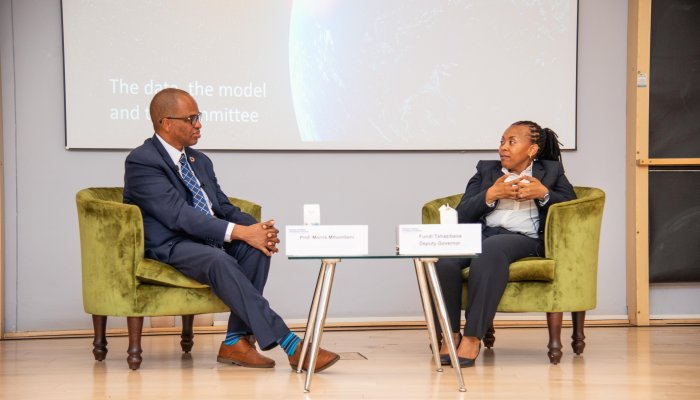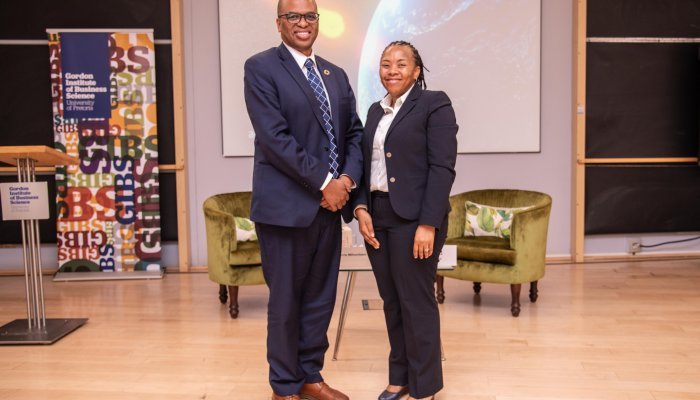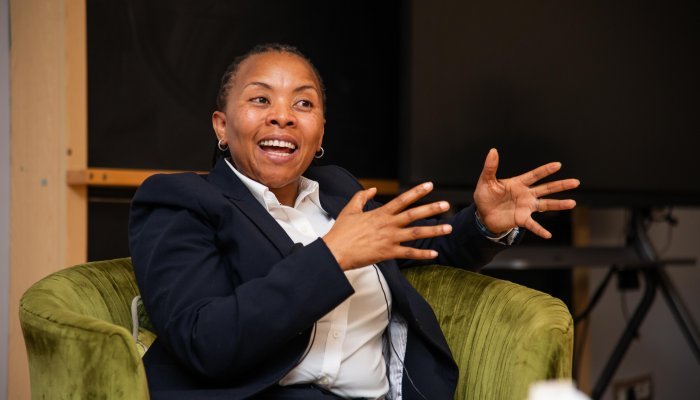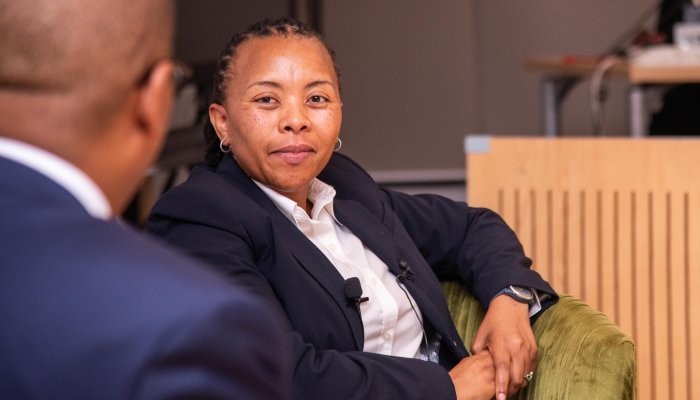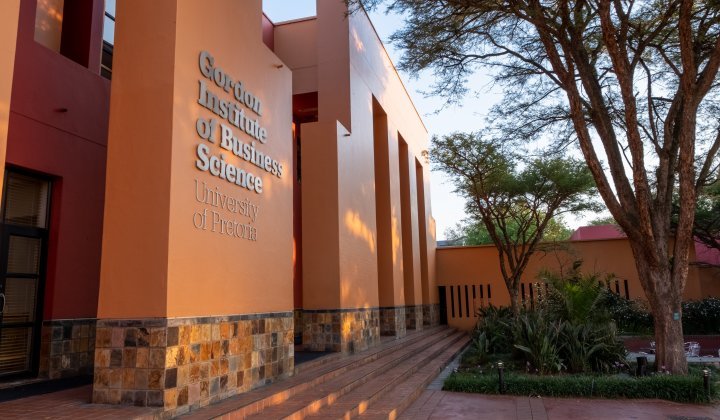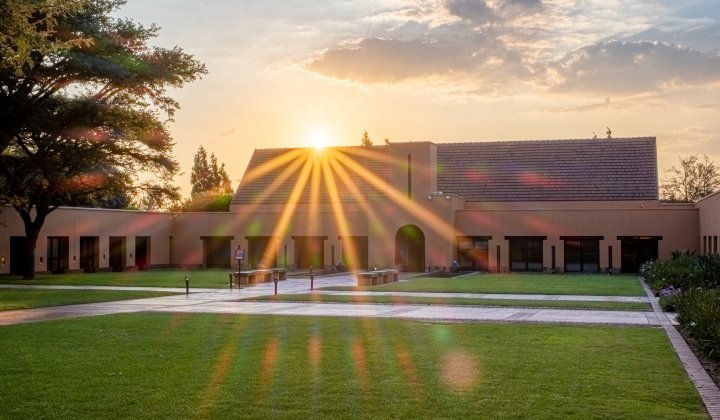The strength, stability and credibility of the Reserve Bank is considered essential for investor confidence and the country’s economic reputation. Decisive leadership is needed to maintain the institution’s reputation.
As current governor Lesetja Kganyago’s term comes to an end in November 2024, the debate around his likely successor is beginning to heat up. Following the unexpected resignation of deputy governor Kuben Naidoo in October, deputy governor and CEO of the Prudential Authority Fundi Tshazibana is seen as the likely favoured candidate.
Govenor in waiting?
In a recent Business Day article, Hillary Joffe pointed out: “The strength and credibility of the Bank’s governors matter for interest rates and inflation. It matters as much, if not more, for SA’s banks and financial markets. The Bank and the Treasury are two major institutional strengths that keep SA on investors’ radar screens despite its many challenges. But strong leadership is needed to protect those institutions.”
Born and raised in Benoni, Fundi Tshazibana’s extraordinary talent was recognised early on when she was identified as a gifted student and matriculated at the age of 15. She graduated with her first degree, a Bachelor of Commerce from the University of KwaZulu-Natal, at 18 and went on to pursue a Master of Commerce in Economics.
Over the course of her career she has accumulated extensive experience in public policy formulation and analysis, having worked at multiple local and international institutions including National Treasury, the National Energy Regulator of South Africa (Nersa) and the International Monetary Fund (IMF) in Washington DC.
She joined the Reserve Bank in 2018 as adviser to the governor, and was appointed deputy governor in 2019 by the president. Tshazibana is also CEO of the Prudential Authority, which regulates banks, insurers, cooperative financial institutions, and conglomerates.
Global inflationary pressures
Navigating the complexities of inflationary targets in a challenging economic environment is an immense task. The economic landscape is full of multifaceted challenges, and the Reserve Bank’s ability to anchor inflation while promoting growth is a delicate balancing act.
Addressing a recent Forum at GIBS, Tshazibana said the Reserve Bank’s monetary policy committee, of which she is a member, has faced a significant challenge in recent times in trying to tackle price stability amid the energy crisis and escalating global inflation.
The global inflation surge experienced in 2021 was partly the result of substantial fiscal and monetary stimulus pumped into the global economy in response to the Covid pandemic. Supply constraints caused by the multiple and lengthy lockdowns that followed added fuel to the fire.
The price of a barrel of oil rose from $50 to $80 at the end of 2021, reaching $120 a barrel by mid-2022, while food inflation in the United States rose from 1.4% to 7.2% at the end 2021. Globally and locally “conditions were both alarming and difficult, and there was little certainty whether the situation was transitory or permanent,” Tshazibana said.
Emerging markets, with their experience of inflationary cycles, were uniquely positioned to deal with inflationary pressures: “We saw this coming a mile away. In a way, it was very clear that emerging markets had something to teach the advanced economies in terms of inflation cycles. Unfortunately, in some advanced economies, the response to inflation was not timely.”
While the Reserve Bank didn’t act quite as early as some of its Latin American counterparts to tame inflation as it started to climb in 2021, the Bank began hiking rates in November of that year. As a result, SA’s headline inflation rate reached its peak at 7.8% in July 2022.
“Although the factors that inform central bank decisions are often not visible, we have learnt from painful past experiences that if you ignore big shocks, they don’t go away but rather persist. If we had done nothing as a central bank, core inflation could have risen quite markedly,” Tshazibana explained.
“We have avoided a panic and are recovering control. Based on the information currently available, the policy stance is probably adequate to stabilise inflation at 4.5%.”
However, there are too many risks on the horizon to pronounce the hiking cycle over just yet, including price pressures in food and fuel and the additional complication of load-shedding.
“It is important to reiterate that as the Reserve Bank, we are committed to containing inflation. We are not committed to any particular interest rate path,” Tshazibana said.
While the inflation target band is wide, the SARB’s preference would be for inflation to be lower than the midpoint of the target range in the longer term to match that of the country’s trading partners and to prevent the erosion of income.
Roles, responsibilities, and limitations of the Reserve Bank
The public debate around the role monetary policy plays in alleviating pressure on the economy is an ongoing one.
While there have been proposals to expand the SARB’s inflation-fighting mandate to include a more active role in fostering employment and economic growth, the Bank’s price stability mandate and independence are enshrined in the Constitution.
Strong and independent-minded leaders are needed to safeguard the Bank in the long term and to stand up to any pressure for the Reserve Bank to assist government with its borrowing costs.
Writing in Business Day, Hillary Joffe said “the biggest risk SA could face, if not now then in future, is from the rising pressure to monetise the public debt that could mount as government’s finances deteriorate and its debt spirals in coming years.”
In an interview with Bloomberg, Tshazibana urged the government to address structural impediments such as record power cuts and poor infrastructure that are undermining the SARB’s work by constraining supply, restraining economic growth and pushing up prices.
The Reserve Bank is “meant to respond to short-term cyclical issues — but if the structural issues don’t change, the economy behaves like it is over-heating, making the job of the Reserve Bank very difficult.”
Capacitating the state
A decisive, capable and accountable state is important for investor confidence and the long-term economic health of the country.
“Our real tragedy as a country is not just low demand, it’s the low use of human talent, and the loss of welfare that is caused by the inefficiencies in the system and the unproductive use of savings. There is a lack of urgency in implementing positive growth reforms,” Tshazibana said in her address at GIBS. “All of these factors are outside the control of the Reserve Bank,” she added.
Tshazibana explained: “Enhancing the capacity of the state is the most important chapter contained in the National Development Plan. A professional public service is essential for delivery.”
Part of this is having the right structure in government, but it is also about citizens taking an active interest. “If we were to have a decisive state, there would be more people interested in making their careers in public service. We need multiple eager young minds, and older, more experienced people to get things done.”
Smart tech, AI and the Reserve Bank
Can AI and smart tech help the SARB’s fight against money laundering?
At the beginning of 2023 South Africa was grey-listed by the Financial Action Task Force, an independent international body tasked with developing and promoting policies that protect the global financial system against terrorist financing and money laundering.
As a result, there are multiple ongoing efforts to improve controls and monitor the illicit flow of funds in South Africa.
Artificial Intelligence and machine learning are potential tools for assisting central banks with anti-money laundering efforts. The increased use of AI in central banking could also bring significant cost and efficiency benefits.
AI can automate many of the manual tasks involved in anti-money laundering, such as transaction monitoring and customer due diligence, enabling automated data extraction and document verification by accelerating data processing, and enhancing risk comprehension.
The Reserve Bank’s fintech unit was established in 2017 to explore the implications of fintech innovation for the Bank and financial services in South Africa. The department actively participates with international regulatory and standard-setting bodies through work undertaken by entities such as the Financial Stability Board and the Bank for International Settlements. Contributions include ongoing work on machine learning, artificial intelligence and open banking.
At the end of September, the European Central Bank (ECB) said it was exploring ways to use AI to better understand inflation and support its oversight of big banks, but stressed that these efforts were still in the early stages.
Other ways AI can be used by central banks include:
- Web scraping and machine learning, which allows central banks to assemble a huge amount of real-time data.
- Analysis of the vast amount of available data so that the insights can feed into areas like statistics, risk management, banking supervision, and monetary policy analysis.
- Machine-learning techniques to automate the classification process, allowing staff to focus on assessing and interpreting data.
Fundi Tshazibana's education and career
- Born 1977 in Benoni, Gauteng
- Fundi obtained her Bachelor of Commerce degree from the University of KwaZulu-Natal at the age of 18, and then went on to obtain a Master of Commerce in Economics from the University of Kwazulu-Natal and a Master of Business Leadership from the University of South Africa.
- Her first job in the public sector was with the National Energy Regulator of South Africa, as a policy analyst, investigating policy options for the restructuring the electricity industry, including the unbundling of Eskom.
- Tshazibana spent 12 years at the National Treasury as deputy director-general where she was responsible for macroeconomic policy and economic forecasting.
- From 2015 to 2018 she sat on the executive board at the International Monetary Fund in Washington, DC, where she was an alternate executive director for South Africa.
- In February 2018 she was appointed as an adviser to the governor of the SARB.
- In July 2019 the president appointed her as deputy governor of the South African Reserve Bank.


